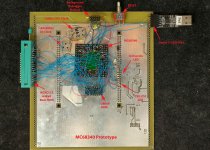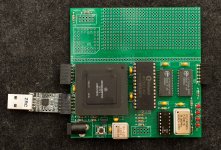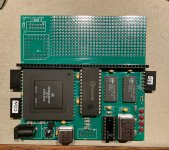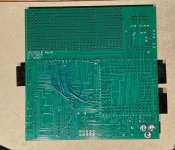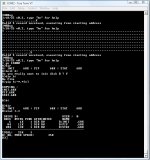Plasmo
Experienced Member
MC68340 is a member of CPU32 family which are microcontrollers based on MC68000 core. I bought several tubes of surplus MC68340 20+ years ago and built up a prototype board to check it out and then forgot about it. My interest is rekindled by recent discussion about “mc68340-cpu32-looking-for-the-answers” and managed to find the 68340 prototype board. I've made further progress with the prototype adding a boot ROM, IO clock and serial port interface; I've ported a simple monitor and ported TUTOR v1.3 to the prototype board; and I've designed a pc board version which should arrive in a week. Before putting away the prototype board (like the last scene of “Raider of Lost Ark”), I'm documenting what I did with this prototype as well as future progress with the pc board version.

